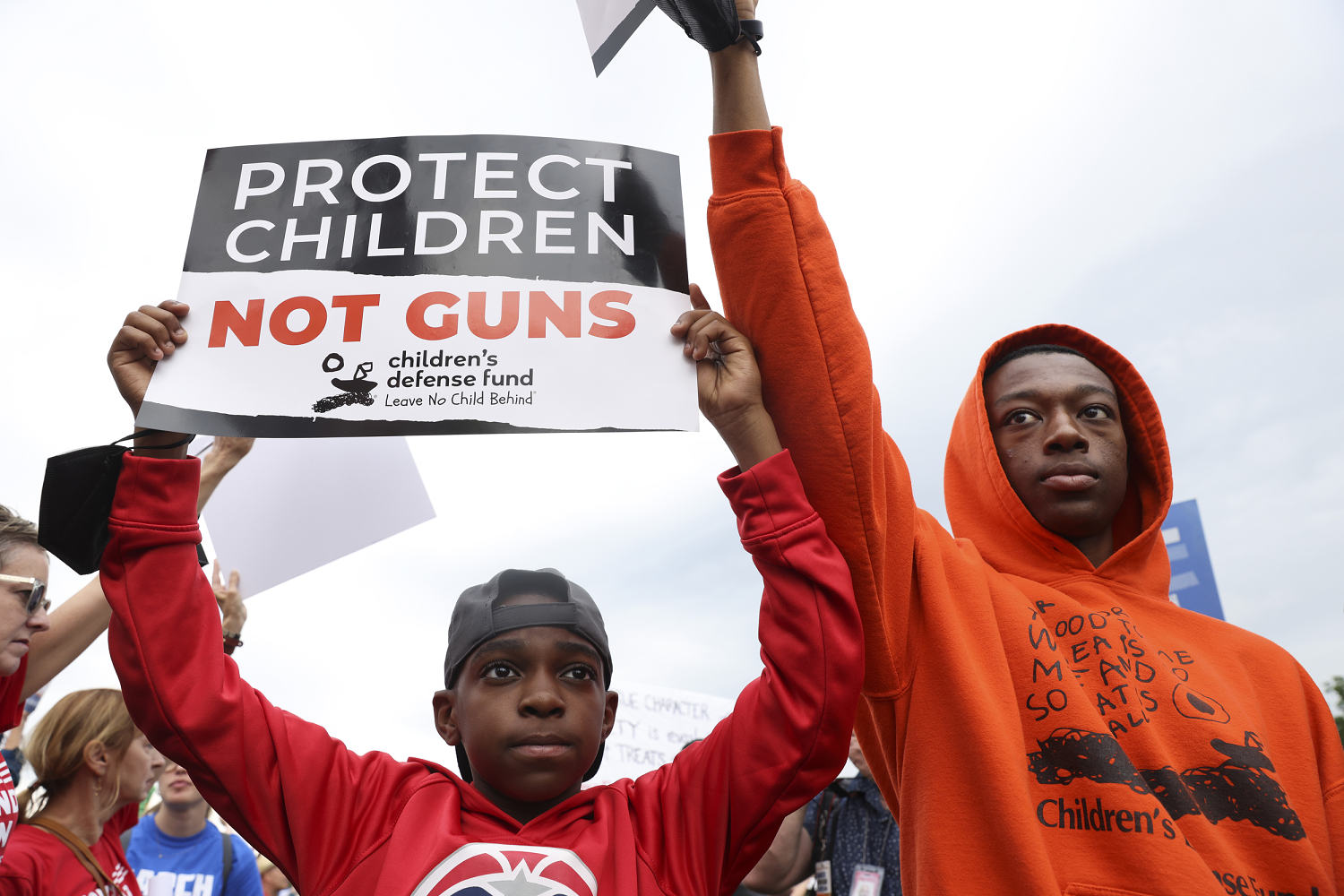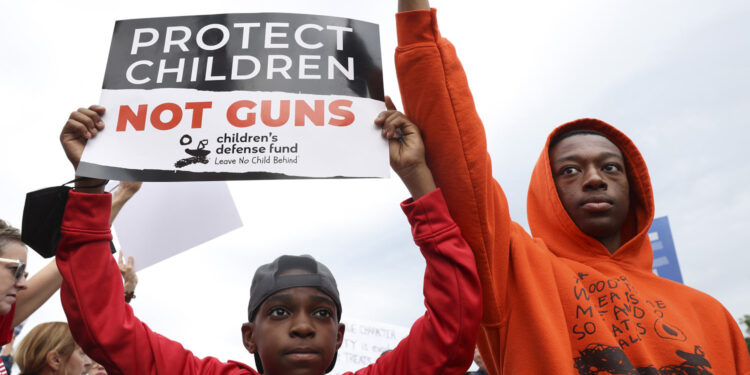
The Summary
- Infants and children in the U.S. are dying at higher rates than in other wealthy, developed countries.
- A new study estimates that the U.S. sees 20,000 excess pediatric deaths per year relative to a group of 16 other countries.
- The researchers point to high infant mortality rates, along with deaths caused by guns and drug overdoses, as some of the reasons for the disparity.
Children in the United States are dying at higher rates than in other wealthy, developed countries.
Research published Monday in the journal JAMA Pediatrics attempts to calculate these “excess deaths” — in other words, how many more kids under age 19 are dying in the U.S. compared to similar countries.
The estimate: 20,000 per year. It’s a bleak picture of the country’s pediatric health.
“The chances of a child surviving to age 20 are now decreasing” after decades of progress, said Dr. Steven Woolf, the study’s co-author and a professor of family medicine and population health at Virginia Commonwealth University School of Medicine.
For the study, Woolf and his colleagues calculated the median mortality rates for children in 16 countries outside the U.S. — Australia, Canada, Japan and 13 European countries — from 1999 to 2019. They compared those rates to the mortality rates for children in the U.S. during the same years, then multiplied the difference by the size of the U.S. population for each year.
The disparity found, the study says, can be partially explained by the United States’ high infant mortality rate. Babies under 1 year old accounted for more than half of the excess deaths. For children over a year of age, Woolf pointed to four factors that may explain the gap: firearms, suicide, drugs and car accidents.
“What’s tragic about this is that we’ve made tremendous progress in recent years in battling pediatric diseases like childhood leukemia and congenital birth defects,” he said. “We’ve also made great progress in preventing injury deaths.”
High infant mortality in the U.S.
Each year, the U.S. records more than 5 infant deaths per 1,000 live births, far exceeding the rates in other high-income countries. Mortality rates are especially high for Native American and Black infants.
Several factors contribute to the United States’ disproportionate infant mortality rate. One is the relatively high rate of sudden infant death syndrome, the unforeseen and unexplained death of an infant younger than 1, compared to other developed countries. Around 2,500 babies in the U.S. die of SIDS each year. Another is that the homicide rate for U.S. infants is relatively high compared to peer countries like England or Canada.
Woolf said such deaths are often associated with abuse or neglect, including cases of “what was once called shaken baby syndrome, where children are violently shaken or disciplined and the impact is fatal.”
Better addressing maternal health could help improve outcomes for infants, said Marie Thoma, an associate professor of family science at the University of Maryland School of Public Health, who was not involved in the new study. Other high-income countries provide more support to mothers caring for newborns than the U.S. does, she said.
“I remember after my own birth, dragging myself to the pediatrician’s office. I could barely walk,” Thoma said. “There’s more midwifery care, more home visiting after the birth in many of these countries.”
Guns, suicides and drugs
The U.S. depends more on cars for transportation than most other countries, which contributes to more accidents in which children are killed.
But Woolf said the more dramatic difference between the U.S. and its peers is the level of gun ownership, which is “unimaginable to most of these other countries.” The U.S. has the highest rate of gun ownership in the world.
Guns are a leading cause of death among U.S. children and teens. Most of these deaths are homicides.
Suicide deaths are also rising among teens and young adults: From 2007 through 2021, the U.S. recorded a 62% increase in suicides among people ages 10 to 24. Woolf suggested that factors like online bullying and social media use may be contributing.
The opioid epidemic in the U.S. also plays a role in its relatively high pediatric mortality rate.
“There’s a difference in regulatory culture between the United States and other countries that have allowed dangerous products to be more prevalent,” Woolf said.
Pediatric deaths from fentanyl increased more than 30-fold between 2013 and 2021, according to a study published last year.
“A lot of the deaths that we’ve seen with fentanyl have occurred in kids who are not even school age,” said Julie Gaither, the author of that study and an assistant professor of pediatrics and public health at the Yale School of Medicine.
“If they’re old enough to walk, they’re picking something up off the floor that’s been dropped or getting into their mother’s purse,” Gaither added. “But there are also cases with homicide where they have been administered opioids. Whether the intent was malicious or not, it’s not always clear.”
Woolf said some of the issues mentioned in his study — particularly suicide, drug use and gun homicides — escalated during the pandemic.
“Covid-19 poured fuel on the fire,” he said, “and really put the U.S. far behind other countries in terms of life expectancy and mortality rates.”







